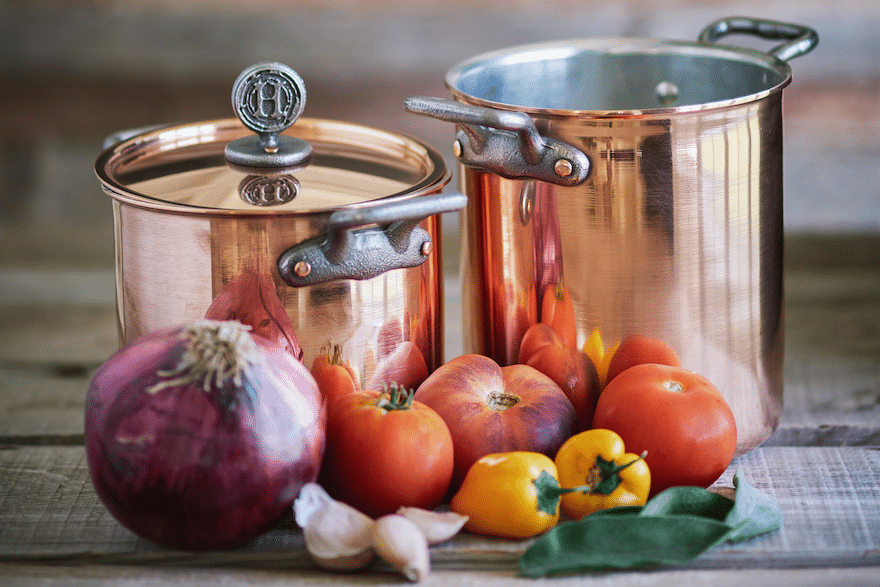What are the Basics of Copper Cookware?
Most of the people I’ve met over the years are afraid of copper cookware. It’s an enigma of epic kitchen proportions.
Those who collect and use it seem to belong to an elite secret society of copper-confident cooks, indoctrinated in the whims and ways of specialty pots and pans requiring unique care.
As the only known female coppersmith in America who builds copper cookware, and restores others, I promise everyone can belong to that elite secret society once we overcome fears brought on by two generations of distance between us and those who used to use it on a regular basis.
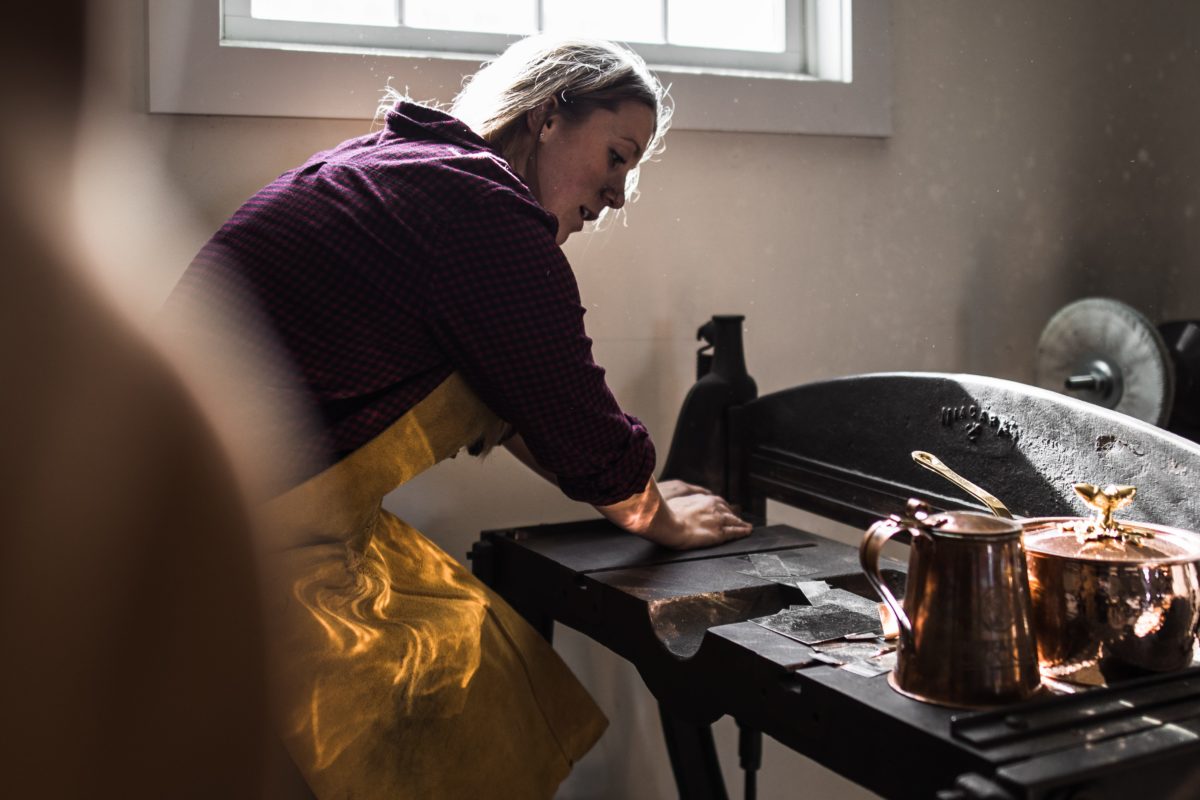
Why Copper Cookware?
I’m often asked: what’s so special about tin-lined copper besides the fact that it looks pretty? In short, it’s the only cookware out there that is totally renewable, will never rust, is energy efficient, and the most responsive, conductive cookware we’ll find (because most of us can’t afford a set of pure silver pans). The science is super cool and the history is fascinating, all of which can be brought into our modern kitchens.
What’s not to love?
A Colorful History
We could go all the way back to the discovery of copper and bronze in the ancient world, when copper was mostly prized for spears and shields in battles of Egypt’s New Kingdom. While this isn’t copper through the ages, it was still used even back then for cups and bowls. We don’t know exactly why, but a strong theory is because not only was the metal malleable, but it didn’t rust. Even better, copper is anti-bacterial and anti-viral. Whether the ancient peoples knew anything about germ theory is irrelevant, but I’m sure they noticed they didn’t get as sick if they drank from a copper or bronze goblet.
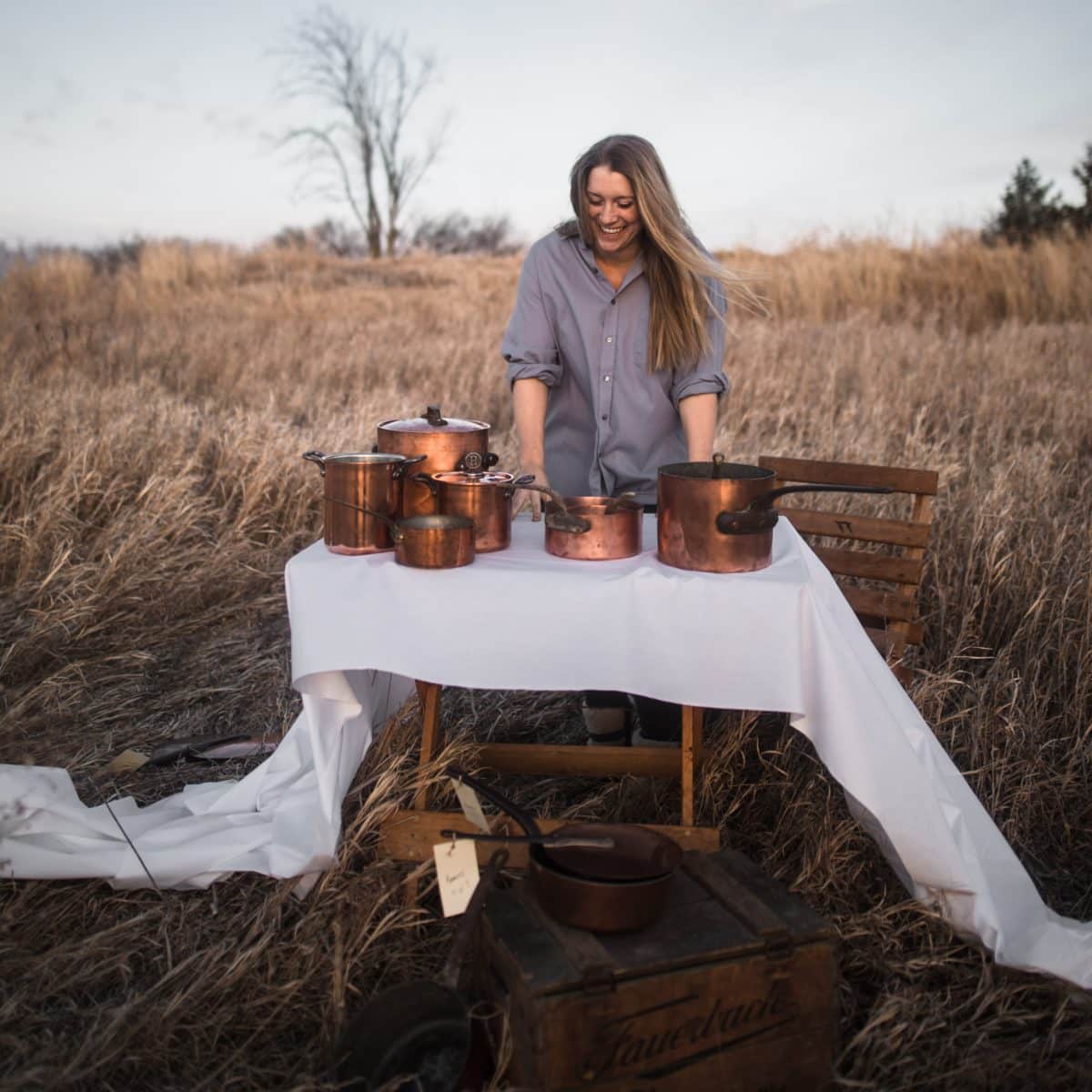
Rocket through the centuries toward today, and we see copper – often times as bronze, which is copper and tin mixed – used in kitchens and homes with unfailing regularity wherever the metal could reach. The beauty and color of copper probably didn’t hurt its case, and many cooks and chefs probably enjoyed looking at their batterie just as much as we do now.
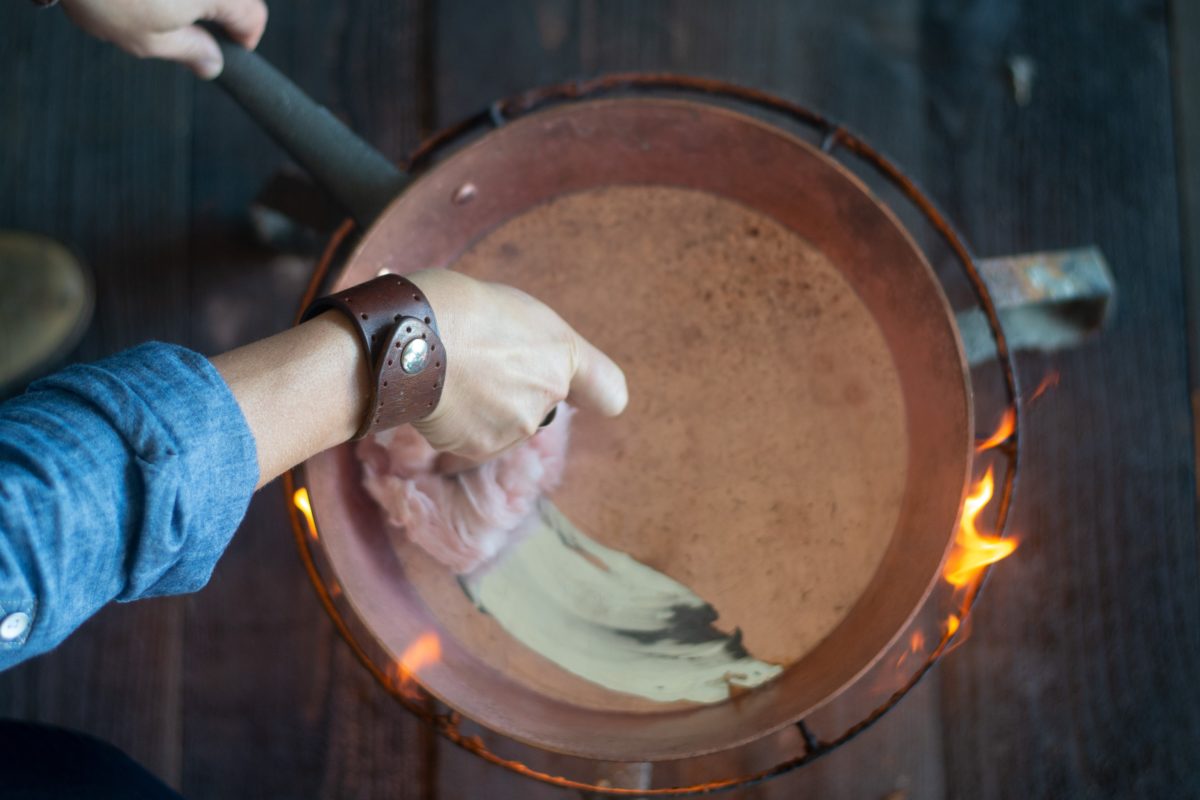
As all things of beauty and expense, though, copper was usually found in abundance in the kitchens of the wealthy more than anywhere else – a practice that lasted well into the 1800s. The master tinsmith I apprenticed under likes to say: “The only people who had copper back in the day were those who could pay someone else to polish it.” It’s not surprising, then, that we carry that assumption to the present day.
Finding Your Copper Cookware
It is absolutely possible to go out and buy brand new copper pots and pans and start digging into getting used to them and how to cook in something that conducts so fast. But just as in the “old days,” that can add up pretty fast!
Plus, if you’re into the historical aspect of copper cookware, it’s extra special to go hunting for lost, hidden gems at flea markets, estate sales, old French villages, or eBay. You can find vintage pieces with black tin on the inside, with old copper handles and cramp seams (which look like ‘dovetail’ seams), which were likely handmade in the late 1700s. Or you might find a piece with an old cast iron handle that has a tin band wiped along the top of the exterior – a sure sign you’ve stumbled across a piece that was certainly made in Europe before the late 1800s.

The point is — old copper can be found for a tiny price tag, and then cleaned and re-tinned by a retinner for a fraction of the cost of a brand-new pan. And now that we know how to stock our kitchens, how can we use our new treasures – how does copper work, why does it work and why does it even matter?
The Science of Copper Cookware
In this day and age, we discuss food in a completely different way than a few decades ago. We ask whether it’s organic or grass-fed. We wonder if it’s local, or without dyes, and if the packaging is safe. But we rarely bring that discussion beyond that. What are you cooking on? Who made it? And of what materials is it compromised?
These questions have never been more relevant in a world where purity with our food and bodies is a constant companion with our eating choices.
Tin-lined Copper
When I brought copper cookware into my life as both a writer and a coppersmith, I had to learn that tin-lined copper (the original, traditional option) is different than stainless steel copper cookware (which hasn’t been around more than a handful of decades), and I fully admit that I’m in the camp of the tin-lined copper cookware fans. Why? Well, tin is naturally non-stick, and it is inert so it doesn’t react with food the way a cast iron skillet does. (And you need copper cookware to be lined – copper is reactive and when heated with food directly in contact, it can make a body feel ill. It’s always important to have lined pots and pans!)
It also bonds molecularly with copper so the highly conductive properties of the copper match the tin and create a beautiful marriage of heat transfer. Stainless steel is 25 times slower than copper to conduct heat, and you need more fuel and fire to heat it. Copper uses a fraction of the heat to get hot extremely fast. Plus, tin can be replaced for centuries as it wears down, and both tin and copper do not rust – so yes, old school copper cookware truly is renewable and will never need a landfill.
Bottom line, knowing my cookware is made of literally nothing but copper and tin (and sometimes iron for the handles), is the essence of cooking pure.
Quick Care
Before I leave you to your copper daydreams, I wanted to impart some tips, tricks, and hacks to taking care of it – the most common questions I receive.
If you have new copper, you can keep the exterior shiny by rubbing ketchup or a potato on it, washing it off and drying it. If your copper is a bit darker from heat and use, make a paste with flour, ketchup, and a bit of vinegar, rub it on, and let it sit (but not dry) for a bit before washing it off.
And if your wares are quite dark, you can put a wipe-and-rinse tarnish remover on the outside and then follow it up with a copper polish – be sure not to have the chemicals touch the interior tin (if you do happen to have stainless lined copper cookware, you don’t have to be as careful about the interior).
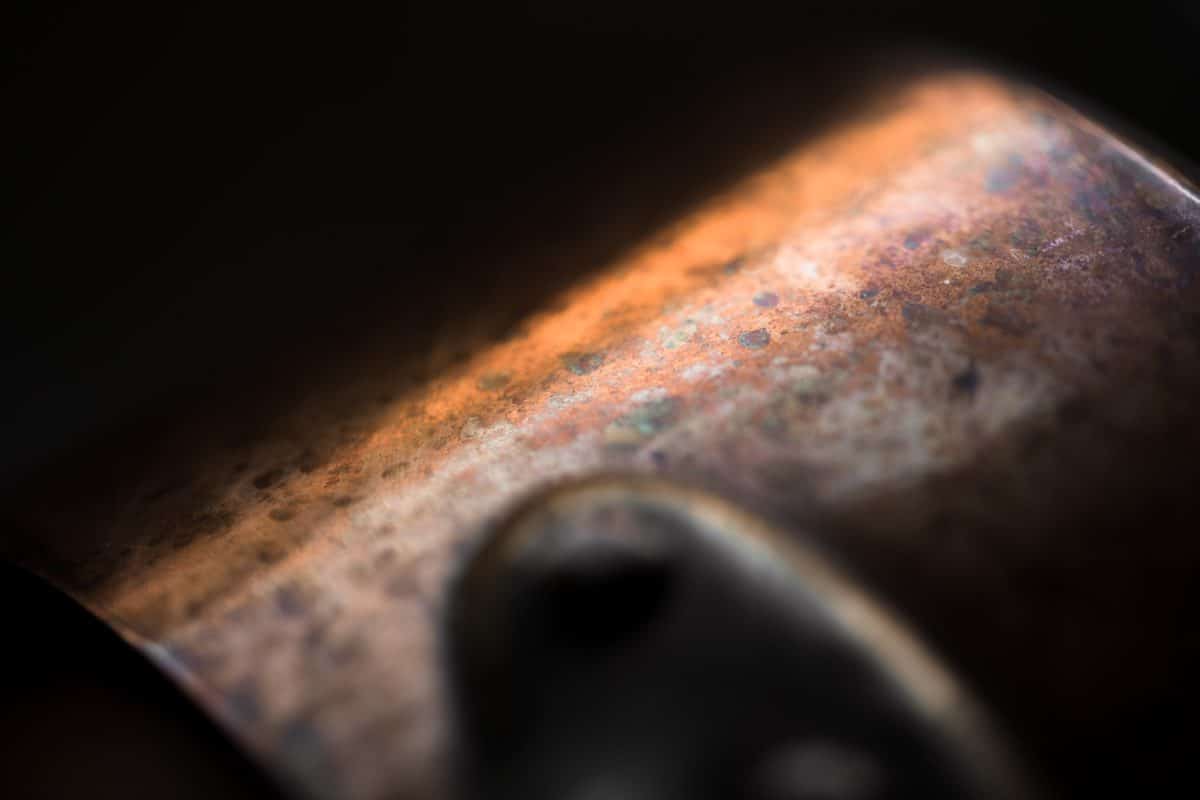
Never put your copper cookware in the dishwasher – our soaps will etch and pit the copper – and never use metal utensils or heat a tin-lined copper pot when it’s empty.
Voila! You are now well-versed more than most people about copper cookware.
So, what are you waiting for? Go find some, cook well, and cook with meaning!
Vintage Copper Cookware
So you’ve found some cool vintage copper? Congratulations! It may very likely need new tin or some serious cleaning and power tools to get ready for use in this century and your kitchen. Here are a couple of re-tinners and you can search online for others – it’s best to use someone closest to you, so you can save on shipping:
Rocky Mountain Retinning – Colorado
